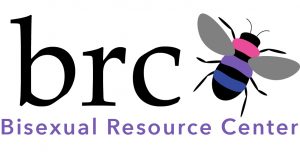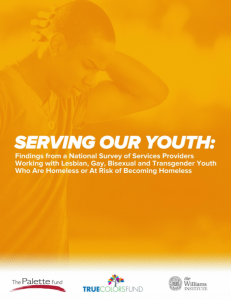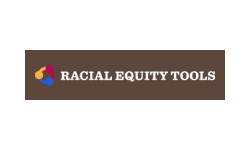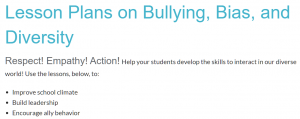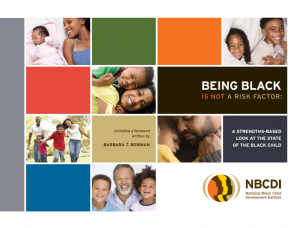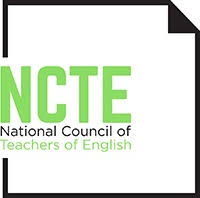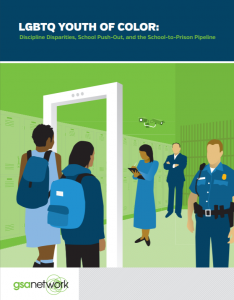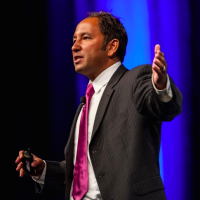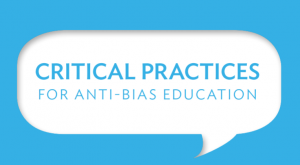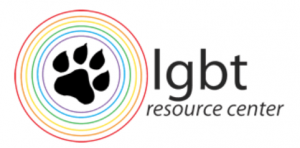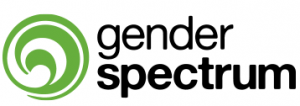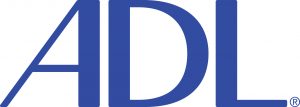Description: The Transgender Law Center’s (TLC) Youth Legal and Policy Work page presents information on some of the legal cases, and policies they have worked on in defense of transgender and gender nonconforming youth and their families, and their rights. They also provide information on requesting legal information and to other Youth related resources from the TLC like their TRUTH program, a national storytelling campaign for trans and gender nonconforming youth. The TLC is available to aid schools and other organizations with legal advice and practices.
Author: Brenna Dickerson (Page 2 of 3)
Law Library
Format: Resource  List, Tool, Website
List, Tool, Website
Description: The LGBTQ section of the Movement Advancement Project provides viewers with a number of resources on the challenges and strengths of LGBTQ youth. The page includes infographics, reports, and tools on such topics as transgender students and Title IX of the Federal Civil Rights Act, national conversion therapy laws and bans, school facilities access, incarceration, and more.
Link: http://www.lgbtmap.org/policy-and-issue-analysis/LGBTQ-youth
Description: A resource list from the Bisexual Resource Center on building safe, inclusive spaces for bisexual+ youth (defined by the BRC as an umbrella term for multi-gender attraction including pansexual, fluid, omnisexual, queer, etc.). This list includes resources on dealing with biphobia, creating bi-inclusive spaces, and being an ally.
Link: https://biresource.org/resources-for-building-safer-spaces/
Format: Article
Description: A Huffington Post article, fist published in Rethinking Schools Magazine in the fall of 2009, on how the school environment, and teachers specifically, can alienate trans, non-binary, questioning and other gender-variant individuals, as well as the power of vocabulary in discovering your identity. The first entry is a personal ‘our voices’ point of view, while the second is from the POV of a mom and teacher.
Link: https://www.huffingtonpost.com/ericka-sokolowershain/when-the-gender-boxes-dont-fit_b_1367643.html
Citation: Sokolower-Shain, E. & Sokolower, J. (2012, March 22). When the gender boxes don’t fit. The Huffington Post. Retrieved from https://www.huffingtonpost.com/ericka-sokolowershain/when-the-gender-boxes-dont-fit_b_1367643.html
Format: Article
Description:
A pdf fact sheet from the U.S. Department of Education with some helpful background facts, information on the impacts of homelessness, the rights of homeless children and youths, and some tips on supporting children and youth in homeless situations.
Link: https://www2.ed.gov/policy/elsec/leg/essa/160315ehcyfactsheet072716.pdf
Citation: U.S. Department of Education. (2016, July 27). Supporting the Success of Homeless Children and Youths [PDF file]. Retrieved from https://www2.ed.gov/policy/elsec/leg/essa/160315ehcyfactsheet072716.pdf
Description:
A resource list from the Early Childhood Technical Assistance Center on working with children and families in homeless situations. This list includes information on education rights for children, available services for children and families, the impacts of homelessness, and related organizations. Included in the ‘enotes’ of the page are a variety of other documents like self-assessment tools for programs, and other materials from the U.S. Department of Health and Human Services, the National Association for the Education of Homeless Children and Youth, the National Center for Homeless Education, and much more.
Format: TED Talk
Description:
A TEDTalk from Mia Birdsong that invites listeners to rethink what they think they know about people in poverty and see the more complicated stories underneath. The video talks about the strength and creativity inherent in people and communities that struggle with poverty. People who stay strong and have hope while working for themselves, their families, and their communities.
Link: https://www.ted.com/talks/mia_birdsong_the_story_we_tell_about_poverty_isn_t_true
Description:
A TED Talk by Kandice Sumner about schools in low income areas with inadequate resources and how that effects the lives of children attending those schools. Sumner also speaks on the achievement gap, the way education is proportionate to access and how the design of the public school system and school funding equations fail kids.
Link: https://www.ted.com/talks/kandice_sumner_how_america_s_public_schools_keep_kids_in_poverty
Description:
A 3-minute video from the Children’s Defense Fund profiling a few stories from children dealing with poverty.
Link: https://www.youtube.com/watch?v=MLrTZ5IG_Eg
Description: Race Forward is a site dedicated to performing original research on racial justice, examining race and ethnicity, and working to explore the deeper significance of racism on injustice in society. Race Forward also publishes Colorlines, a news site that looks critically at daily breaking news through a racial focus. Race Forward professionals often speak publicly on racial issues, spearhead campaigns, and support initiatives by providing training and development workshops online and in person. Further information about training and professional development they offer are included on their site.
Description: The Serving Our Youth report features the data from a national, web-based survey of agencies serving homeless youth run from October 2011 to March 2012. The report details the LGBT populations served, who is most at risk, and why those populations are most at risk.
Citation: Durso, L.E., & Gates, G.J. (2012). Serving our youth: Findings from a national survey of service providers working with elsbian, gay, bisexual, and transgender youth who are homeless or at risk of becoming homeless. Los Angeles: The Williams Institute with True Colors Fund and The Palette Fund. Retrieved from http://williamsinstitute.law.ucla.edu/wp-content/uploads/Durso-Gates-LGBT-Homeless-Youth-Survey-July-2012.pdf
Description: A TED Talk by Chimamanda Adichie that discusses the importance of providing people with diverse literature and world views. Adichie talks about several personal instances of how a single story can be internalized by readers, as well as how it can affect individuals when approaching others. Throughout the talk Adichie emphasizes the innate power of stories and how important it is to find and engage with other people and their stories.
Link: https://www.ted.com/talks/chimamanda_adichie_the_danger_of_a_single_story
Description: The Racial Equity Tools website helps support those working towards racial equity by providing history, research, tips, tools, and learning modules. Separated into 6 broad sections, the website provides background information on concepts, theories, and research in ‘Fundamentals’; history, data, and tips for action planning in ‘Plan’; information on 17 strategy areas and valuable communication resources in ‘Act’; tools for self-assessment to help individuals improve, document, and define their work in ‘Evaluate’; an online forum to speak with other like-minded individuals in ‘Connect’; and learning modules and films in ‘Curricula’.
The Connect and Curricula sections require visitors to register for a site account to access.
Format: Website
Description:
Launched in 2006 by Debbie Reese, a Native tribally enrolled at Nambe Owingeh, American Indians in Children’s Literature (AICL) is a regularly updated personal blog committed to helping readers select books that accurately portray Native people and nations. The AICL offers many valuable resources: critical reviews of books for all ages featuring portrayals of Native people, and whether the book is or isn’t recommended; articles covering varying topics related to Native identity and challenges, lesson help, lists of various Native professionals and contacts, and links to other helpful websites and resources.
Link: https://americanindiansinchildrensliterature.blogspot.com/
Citation: Reese, D. (2006). American Indians in Children’s Literature. Retrieved from https://americanindiansinchildrensliterature.blogspot.com
Format: Resource list, lesson plans & curriculum
Description: A resource list created by GLSEN, listing lesson plans focused on countering bullying in the school culture by expanding the directions of the curriculum and championing good ally behavior. The included lessons discuss transphobia, misgendering, and ableist language.
Link: https://www.glsen.org/educate/resources/lesson-plans
Description: A small resource list created by GLSEN, listing lesson plans, curriculum guides, toolkits, and other helpful aids for a LGBT-Inclusive Curriculum. The included lessons briefly touch upon history, respectful social behavior, and important people, among other topics.
Description: A national report created by the National Black Child Development Institute that challenges the overemphasis on limitations and, instead, focuses on the strengths of Black children, families, and communities. The report includes a mixture of essays from experts, information from organizations, and data focused on ways the Black community’s strengths improve outcomes for children, including examples of where Black children and families are succeeding.
Citation: National Black Child Development Institute.(2013). Being Black is not a risk factor: A strengths based look at the state of the Black child. Washington, DC: National Black Child Development Institute. Retrieved from https://www.nbcdi.org/sites/default/files/resource-files/Being%20Black%20Is%20Not%20a%20Risk%20Factor_0.pdf
Description:
The NCTE’s Standing Committee Against Racism and Bias has created a list of resources related to responsibly discussing and standing up to racism in the classroom and in the community. This document includes 6 sections: Resources for Working with White Students, Resources for Understanding White Supremacy, Charlottesville-Specific Resources, Resources for Understanding Bias, Articles and Other readings—with two subsections: Books for Teachers, and Books for Students—and a small list of Websites to Follow for other student books.
Citation: National Council of Teachers of English Standing Committee Against Racism and Bias in the Teaching of English. (2017, August 15). There is no apolitical classroom: Resources for teaching in these times. Retrieved from http://www2.ncte.org/blog/2017/08/there-is-no-apolitical-classroom-resources-for-teaching-in-these-times/
Description: A set of three collaborative reports between GSA Network and Crossroads Collaborative connected to LGBTQ Youth and School Pushout released in 2014. The findings in these reports discuss how LGBTQ and gender non-conforming youth, especially youth of color, disproportionately face not just bullying from peers but more policing, harsher restrictions, and discipline from school staff and administration. These reports are also accompanied by a small handout created by the Advancement Project and GSA Network on policy recommendations to help change the strenuous school climate for these youths.
PDF Link: https://gsanetwork.org/Pushout-Report
Citation: Burdge, H., Licona, A. C., Hyemingway, Z. T. (2014). LGBTQ youth of color: Discipline disparities, school push-out, and the school-to-prison pipeline. San Francisco, CA: Gay-Straight Alliance Network and Tucson, AZ: Crossroads Collaborative at the University of Arizona. Retrieved from https://gsanetwork.org/files/aboutus/LGBTQ_brief_FINAL-web.pdf
Burdge, H., Hyemingway, Z. T., Licona, A. C. (2014). Gender nonconforming youth: Discipline disparities, school push-out, and the school-to-prison pipeline. San Francisco, CA: Gay-Straight Alliance Network and Tucson, AZ: Crossroads Collaborative at the University of Arizona. Retrieved from https://gsanetwork.org/files/aboutus/GSA_GNC_FINAL-web.pdf
Advancement Project and GSA Network. (2014). School discipline disparities recommendations. San Francisco, CA: Gay-Straight Alliance Network and Washington, DC: Advancement Project. Retrieved from https://gsanetwork.org/files/aboutus/Recommendations_final.pdf
Description: A talk by Alex Kajitani who describes some ways that race effects the lives of students, why race needs to be talked about in the classroom, and his four simplified stages of ethnic identity formation—Pre-Encounter, Encounter, Immersion and Internalization.
Format: Tool
Description: Project Implicit is a non-profit organization that has developed a series of tests to measure hidden biases which are called Implicit Association Tests (IATs). The tests are provided free online for anyone to tests their biases. The Social Attitude IATs include a variety of individual test that can be taken separately on such topics as Religion, Age, Skin-Tone, Arab-Muslim, Asian American, and many more. These tests can help educators assess themselves, think critically about their biases and how they may manifest, and can begin to combat these biases more effectively.
Link: https://implicit.harvard.edu/implicit/takeatest.html
Format: Website
Description: Rethinking Schools is a nonprofit dedicated to addressing the racial and social inequalities by promoting equality in schools. Their website includes a blog (free), a print magazine (subscription-based), lesson plans, and recommended books on a variety of social justice topics. The website is dedicated to diversity and encouraging professionals to examine their environment and work towards changing harmful rhetoric in education to create more inclusive and supportive environments for all.
Link: https://www.rethinkingschools.org
Description: A professional development course of four hour-long modules for educators who want to develop culturally responsive practice, either individually or in a small group setting. The four modules focus on: Instruction, Classroom Culture, Family and Community Engagement, and Teacher Leadership.
Link: https://www.tolerance.org/professional-development/critical-practices-for-antibias-education
Description:
A webpage provided by the University of Winconsin Milwaukee’s LBGT Resource Center on the usage of varied Gender Pronouns, including an FAQ section and a How-To Guide.
Description: A list of varied educational resources on the Gender Spectrum website that are focused on creating gender inclusive schools and communities.
Link: https://www.genderspectrum.org/resources/education-2/
Format: Assessment
Description: A tool created by Gender Spectrum, an organization that aims to help create gender sensitive and inclusive environments for all children and teens. This tool can help you and your colleagues assess the gender inclusiveness of your environment, where you may be lacking, and help you to narrow what your focus should be.
PDF Link: https://www.dropbox.com/s/duc1wn5zgo2j2zs/Gender_Inclusive_Assessment_Tool_080617.pdf?dl=0
Description: An article originally published in the American School Counselor Association magazine (May/June 2017) which lists strategies and actions individuals can take to communicate directly with youth and encourage their schools to be more gender-inclusive.
PDF Link:
https://www.genderspectrum.org/blog/asca-safehavens/
https://www.genderspectrum.org/staging/wp-content/uploads/2017/05/Safe-Havens.pdf
Citation:
Westheimer, K. (2017). Strategies to create safe havens for students. Gender Spectrum. Retrieved from https://www.genderspectrum.org/staging/wp-content/uploads/2017/05/Safe-Havens.pdf
Format: Article
Description: A pdf from the Gender Spectrum website on 12 easy steps on the way to gender inclusiveness. This document gives 12 simple steps, changes in attitude, and day to day activities an individual can make to start working towards a more gender inclusive environment.
PDF Link: https://tinyurl.com/GenderInclusion
Citation: Gender Spectrum (n.d.). Twelve easy steps towards gender inclusion. Retrieved from https://www.dropbox.com/s/am19758yamrqp61/12%20Easy%20Steps%20Towards%20Gender%20Inclusion_112514.pdf?dl=0
Format: Learning Module
Description: This micro-credential course, offered free of cost online through BloomBoard, focuses on the critical components of anti-bias instruction. Some participants may be able to earn continuing education credits from their state or district by completing the micro-credential requirements.
Link: https://bloomboard.com/microcredential/view/aeed6cb6-f079-491c-a5c6-cfba701bc42c
Description: On this website— designed for teachers, students, and families— the Anti-Defamation League provides a variety of resources on developing and promoting diversity and anti-bias behavior. There are seven categories highlighted: Classroom Tips and Strategies; Definitions and Language; Discussion/Activity Guides; Film Discussion/Activity Guides; Historical Information; Holidays, Events and Special Months; Podcasts and Webinars
Link: https://www.adl.org/education/resources/tools-and-strategies/anti-bias-resources
